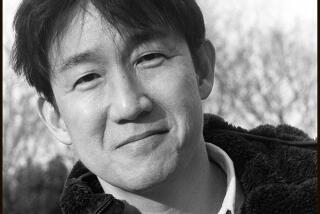THE HUMAN BODY: HOW WE EVOLVED by...
- Share via
THE HUMAN BODY: HOW WE EVOLVED by Joanna Cole; illustrated by Walter Gaffney-Kessell and Juan Carlos Barberis (Morrow: $11.75; 63 pp.; age 7-up). Forgive me, but every time I watch a playground crowded with swinging, climbing and screeching kids, it’s hard not to think of monkeys at a zoo. Youngsters innately use the same “hook grip” as tree-dwelling primates, which is why many parents don’t install easy-to-reach curtain rods in their homes. This grip is handy for jungle gyms, carrying lunch sacks and “other activities,” says Joanna Cole in this excellent finale to her anatomy series.
In her typical no-nonsense prose, she describes how scientists and archeologists found proof of human ancestry and how our intelligence and symbolic language raise us above all species. “We even talk among ourselves about whether it is right to keep other animals locked up (in zoos).” Good.
Cole’s explanations are easy to understand: If our brain’s cortex were spread out, it would be the size of a small tablecloth; humans have the same number of hairs as gorillas; our stereoscopic vision has changed little from our swinging ancestors’. Evolution charts, a glossary with pronunciations and an index dignify this along with her other science books, including ALA Notables “How You Were Born,” “A Frog’s Body” and “A Horse’s Body.”
Dozens of pencil drawings by Walter Gaffney-Kessell and Juan Carlos Barberis simplify anatomical details while showing our stooped and hairy forebears at work. Illustrations blend into the wide margins, and type is large enough to entice young readers. Since the pictures make the book, it’s a pity that the only credit given to the artists is a measly byline on the title page.
Though the evolution theme undoubtedly will be rejected by Creationists, this is a superb guide for kids who think cave families whooped it up like the Flintstones. It’s also interesting to learn that “some Neanderthal and/or Homo erectus genes may still be in our bodies today.” This might explain why my children draw on walls so well.
FO, William Morrow
More to Read
Sign up for our Book Club newsletter
Get the latest news, events and more from the Los Angeles Times Book Club, and help us get L.A. reading and talking.
You may occasionally receive promotional content from the Los Angeles Times.









